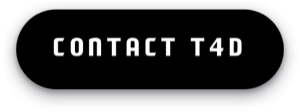DNA profiling and how it's performed
Every defendant, attorney and plaintiff dreams of having a stronger evidence in the courtrooms. This opportunity was first introduced in the beginning of the last 1980s, and it is well known as DNA profiling. Any human being has a unique identifier which is built within their bodies, besides the unique pattern which is engraved on our fingers, called fingerprint. The DNA (or deoxyribonucleic acid) represents a genetic blueprint of any living creature that determines its biological characteristics. It is located in almost every cell in the human body and its form is similar to a long molecule and it is a constant marker that can not be removed once it was embedded or imprinted on a certain item.
When a child is conceived, he receives half of the DNA from the mother and half from the father. Studies show that the DNA of every human is 99.9% identical, however, the remaining of 0.1% is all that it takes to uniquely identify someone. The human DNA is composed of about 3 billion base pairs and its building blocks are mostly composed of sugar and carbon. The other part of 0.1% (which is around 3 million base pairs) is what constitute as our DNA fingerprint and what makes us unique.
Since 1980 courts have relied on the amazing accuracy of DNA profiling in order to solve various crimes. Also known as DNA fingerprinting, it was even used to solve crimes which are older
than 30 years. So how is the DNA profiling done? Well there are several steps involved such as the following:
First of all, specimens that may be considered as evidence are collected from the crime scene. It is basically found in anything such as blood, hair, bodily fluids and so on. In some special
cases where none of those are found, skin cells can be extracted from the victims fingernails if they scratched their attacker, this way the criminal can be easily identified.
After the DNA extraction is performed, it then requires to be cut and isolated so that it can be matched against several samples. There are some special recognize pattern enzymes in the DNA that facilitate the search and cuts the strand.
Afterwards, in a process called electrophoresis, the collected strands are placed on a gel that separates them by passing current through it.
Last but not least, the fragments resulted are then compared to the existing samples of the suspects in order to determine if they match.
This procedure is mostly used in homicide, sexual offenses, robbery, assaults, criminal damage and some other cases which may require the identification of the suspects. It is mostly useful for narrowing down the list of suspects required to work through by the authorities. It was actually reported by the FBI that in most cases it helped them remove one-third of the rape suspects because the samples did not match. Also, besides using the DNA profiling method, authorities take in consideration the possibility of specimens being planted at the scenes, reason why they also investigate the crimes based on testimonies, motive, weapon and any other clues that will make their case solve in a more accurate manner.
We are here to help any and all that needs to find out the truth about their loved ones. our DNA test results can be for your peace of mind or for legal purposes, the result of our DNA tests are final and cannot be challenged. T4D™ DNA test service is private & 100% accurate and the results can be used as a legal document. Please feel free and contact us today so you may begin your journey to the truth.
Ways to collect samples: By TESTING4DNA.COM
Self-made cheek swab, FTA Classic Card, Whole Blood Cord Blood, Bloodstains, Sperm (Semen), Toenail or Fingernail Clippings, Amniotic Fluid, Chorionic Villus Sampling, Fetal Tissue ,Chewed Chewing Gum, Cigarette Butts, Hard Candy, Used Condom, Semen Stains On Clothing, Used Tampons or Used Feminine Pads, Sweaty Hat or Ball Cap Hocked Loogie (spit), Plucked Hair, Q-tips with earwax Snotty Kleenexes, Urine, Electric Razor Debris.
Ways to collect samples: By TESTING4DNA.COM
Self-made cheek swab, FTA Classic Card, Whole Blood Cord Blood, Bloodstains, Sperm (Semen), Toenail or Fingernail Clippings, Amniotic Fluid, Chorionic Villus Sampling, Fetal Tissue ,Chewed Chewing Gum, Cigarette Butts, Hard Candy, Used Condom, Semen Stains On Clothing, Used Tampons or Used Feminine Pads, Sweaty Hat or Ball Cap Hocked Loogie (spit), Plucked Hair, Q-tips with earwax Snotty Kleenexes, Urine, Electric Razor Debris.
Call At (866) 773-3671
" To insure 100% accurate results, we run all tests twice "
DNA Testing Locations in The US.
Alabama, Alaska, Arizona, Arkansas, California, Colorado, Connecticut, Delaware, Florida, Georgia, Hawaii, Idaho, Illinois, Indiana, Iowa, Kansas, Kentucky, Louisiana, Maine, Maryland, Massachusetts, Michigan, Minnesota, Mississippi, Missouri, Montana, Nebraska, Nevada, New Hampshire, New Jersey, New Mexico, New York, North Carolina, North Dakota, Ohio, Oklahoma, Oregon, Pennsylvania, Rhode Island, South Carolina, South Dakota, Tennessee, Texas, Utah, Vermont, Virginia, Washington, Washington DC, West Virginia, Wisconsin, Wyoming,
Copyright © TESTING4DNA™
All content on this website is copyright protected & monitored. You may not, except with our express written permission, distribute or commercially exploit our content. Nor may you transmit it or store it in any other website or another form of electronic retrieval system, failing to do so will result in a lawsuit.

